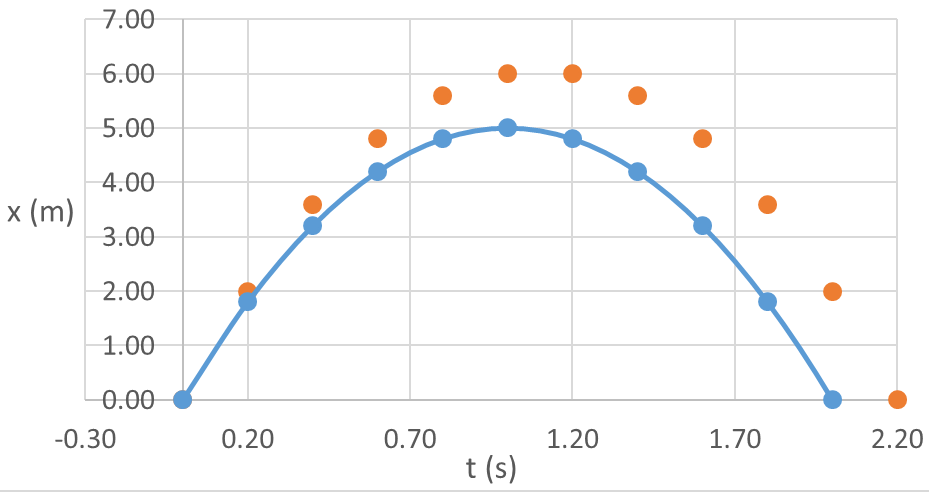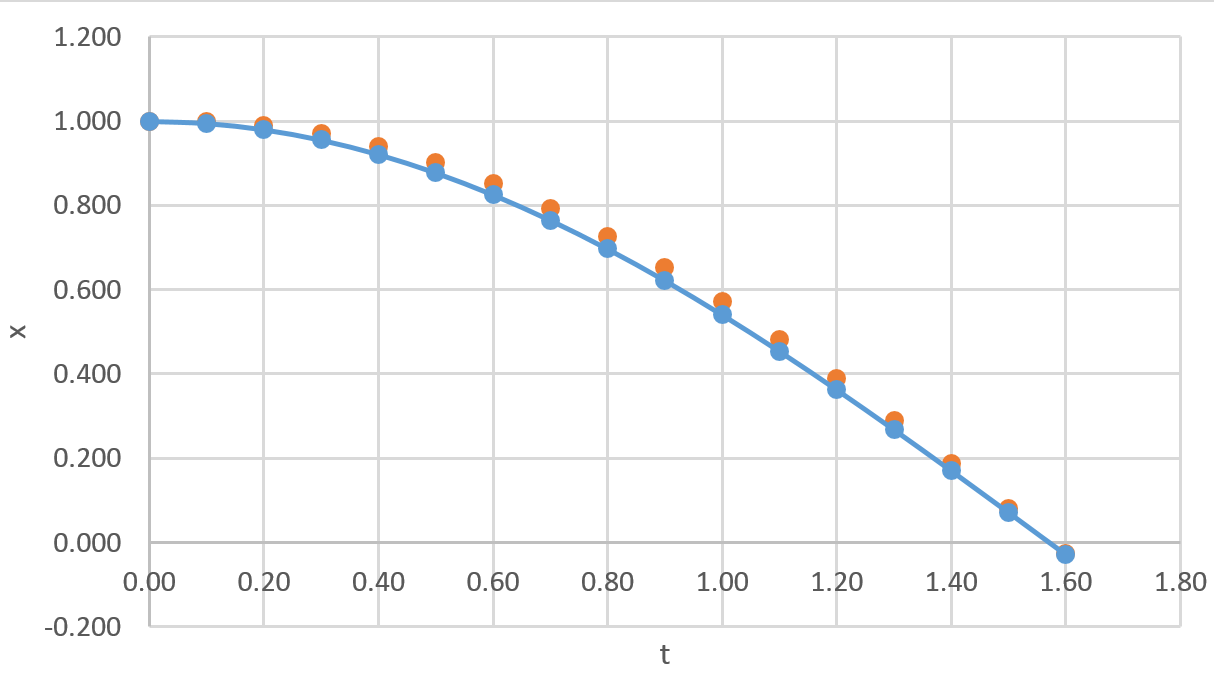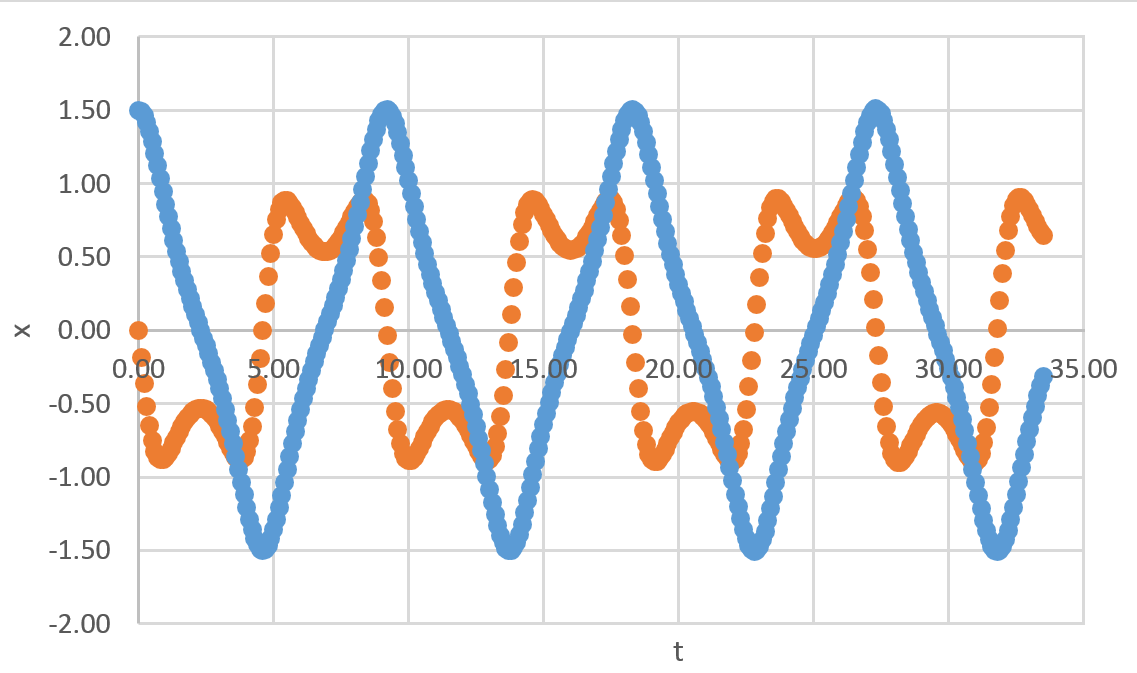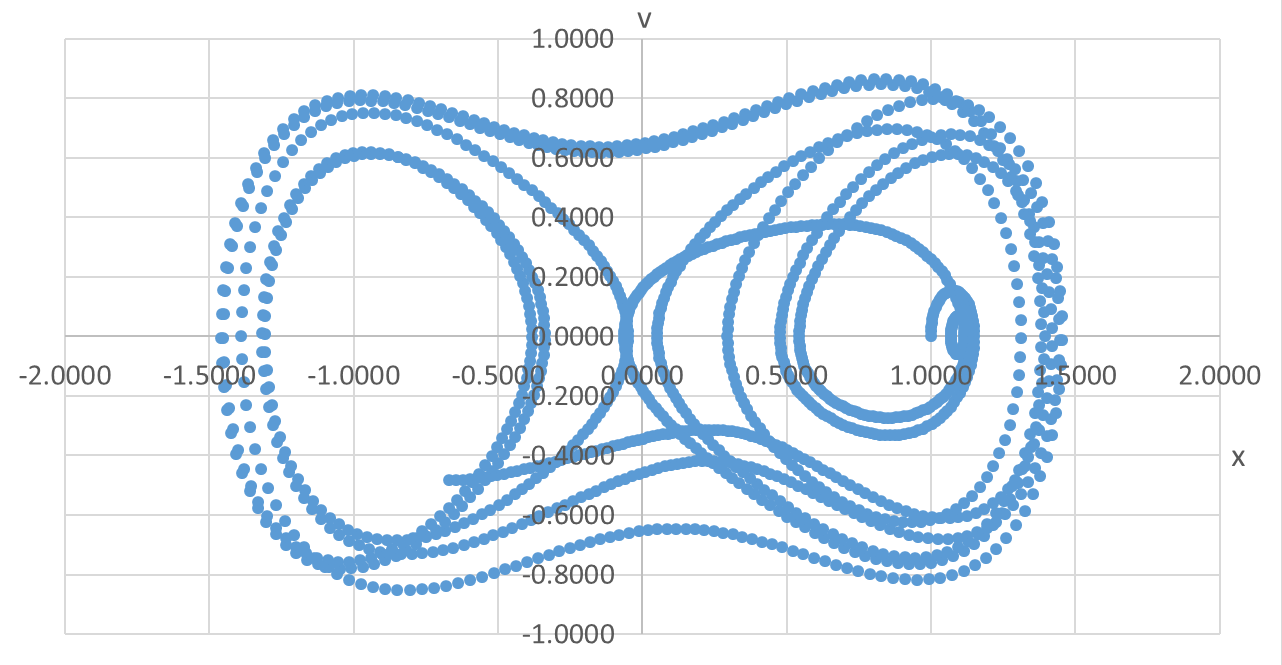Unfolding motions by means of computers
How to solve equations of motion numerically?
An interactive introduction for studentsfamiliar
with the concept of velocity and acceleration, and the use of Excel
To be used in classrom or online teaching
Questions and tasks are set in blue boxes
excercises and problems in yellow boxes.
Problems marked with an ![]() are recommended for
particularly motivated readers.
are recommended for
particularly motivated readers.
What you'll learn? In analogy with digital watches in which time passes in discrete steps, you understand that a motion can be monitored with computers by considering time passing in steps of some finite size $\Delta t$. The result cannot be the same as with an ideal continuous time, the difference, however, can be kept tiny by taking the time-step $\Delta t$ small enough (compared to the characteristic time of the motion). Such a numerical procedure can be very accurate. This picture is supported by the every-day observation that a movie film is also based on snapshots: nevertheless we perceive the sequence as a time continuous change since the time difference between the frames is short. We invite you to an exciting journey to discover that Newton’s law enables us to monitor motions for long times, starting from an arbitrary initial state. You will also see that a numerical solution allows you to treat effects (e.g., air drag) typically neglected in school curriculum. By the end of this excursion you will be able to study chaotic motions by means of your self-written Excel worksheets, and experience the surpise of "butterfly effect".
In the 4 sections below you are going to become acquainted with different levels of this discretized, numerical approach exploring the world of motions, ranging from hand written first setps to an improved scheme (the most advanced ones - formulated in modern programing languages - are routinely used by cutting edge research in a broad range of scientific disciplines). In most of our examples a prepared Excel worksheet will be at your disposal, along with a graphical representation of the motion in question. You are free to change the number of steps, i.e., the length of the time period over which the motion is followed, and the quantities plotted in the graphical representation. Furthermore, you are invited to change the time step $\Delta t$, too, to check accuracy, and any paramaters of the systems (e.g. to switch off air drag). After having gone through a few examples, you shall be able to set-up a problem of your own within the realm of a body moving along a line or in a plane, you just have to know the force law, i.e., how the forces acting on the body depend on the instantaneous location and velocity of the body, and on time. Good luck!
Copyright: T. Tél 2018-2021
This study was funded by the Content Pedagogy Research Program of the Hungarian Academy of Sciences.



